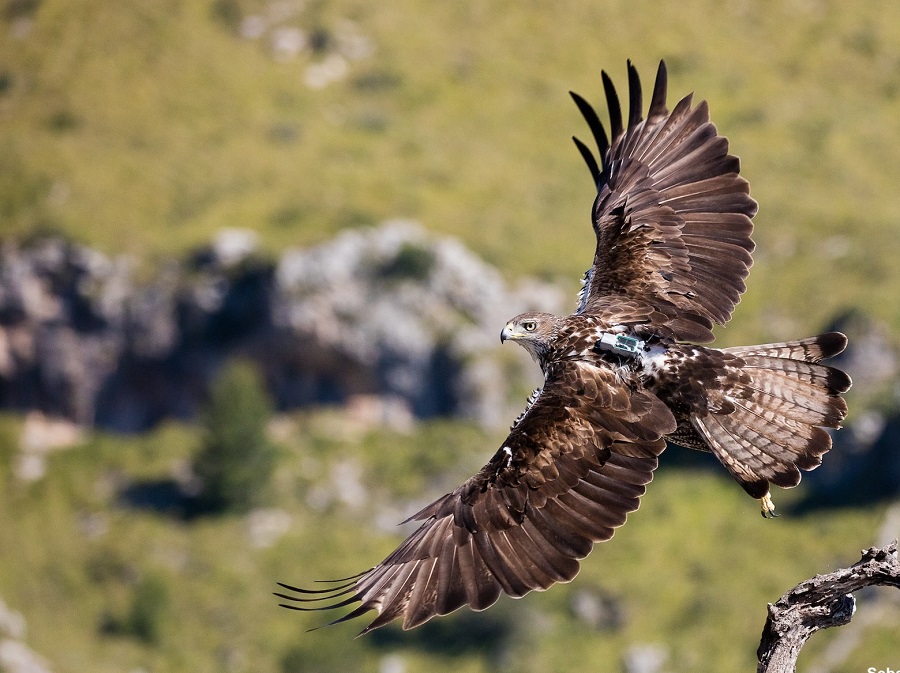Reintroducing species in new natural habitats is a strategy to help prevent the extinction of the most threatened organisms. However, this process is influenced by several factors ─which are not much explored in the scientific bibliography─ and its global success ratio is still low.
A study coordinated by the Conservation Biology Group of the University of Barcelona (UB) researchers in Barcelona (Catalonia, Spain) and IRBio analyses the efficiency of reintroduction strategies for the Bonelli’s eagle in Mallorca. The study, carried out in collaboration with the Government of the Balearic Islands and the Wildlife Recovery Consortium (COFIB) within the framework of the European project LIFE Bonelli, provides new scientific knowledge in global ecology to increase the success options of reintroduction programs with the highest economic efficiency.
The Bonelli’s eagle (Aquila fasciata), an emblematic bird of prey in the Mediterranean─ is a declining species in the central and northern areas of the Iberian Peninsula. In Mallorca, it disappeared during the 1970s as a result of an intense human persecution, despite being a key species in the natural environment as predator of birds and mammals and as a control of the ecosystem’s balance.
In 2011, the Government of the Balearic Islands, with the support from LIFE project, started the process of reintroduction of the eagle in Mallorca. This plan has counted on the scientific collaboration of the Conservation Biology Group of the UB and IRBio, a team that conducted the demographical analysis to validate the most efficient strategies in the reintroduction plan. The initiative of the species reintroduction in the island has been a success and there are now about 40 eagles, including nine breeding pairs.
The study, published in the journal Animal Conservation, from the Zoological Society of London (ZSL), examines the efficiency at a demographic and economic scale of the different strategies based on the release of birds of different ages and origins, that is, captive-born and wild-born species. Through a cost-benefit balance ─with biological and economic indicators─, the experts compared the reintroduction strategies: hacking based on captive breeding (‘Capthack’), hacking based on chicks extracted from wild nests in natural populations (‘NestHack’) and the translocation of wild, non-juvenile birds from natural populations recovered from rehabilitation centres (‘WildTrans’).
“The successful reintroduction of endangered species in the natural environment depends on several factors such as the amount and the age of the reintroduced individuals, the quality of the destination habitat, the used reintroduction methods, the origins of the reintroduced individuals, and the biological and ecological features of each species”, notes the lecturer Joan Real, head of the Conservation Biology Group of the UB and the Biodiversity Research Institute (IRBio) of the UB.
The island environment of Mallorca could have favoured the results of such strategy. “The natural barrier of the sea, in this case, could have limited the tendency of the released eagles to return to their origin populations, which can happen in species with a high dispersal ability”, notes the lecturer Antonio Hernández-Matías (UB-IRBio).
See also TOP Spanish universities











